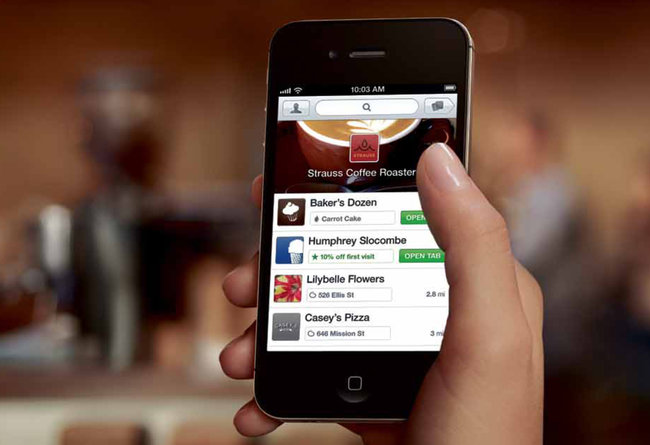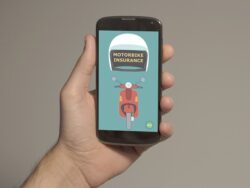The campaign to digitize your wallet is intensifying

This week, Starbucks joined forces with Square, a technology start-up that lets you pay for things with a smartphone. Coming from a company whose cafes seem to be on every corner, that’s a powerful endorsement. Does that mean your phone will soon replace your wallet?
That’s hardly certain, because any company offering mobile payments faces a big challenge: convincing people that paying with a phone is safer and more convenient than using cash or a credit card.
But the partnership will clearly give a lot more exposure to Square, a company in San Francisco with about 300 employees, and to the idea of mobile payments in general.
Square isn’t yet near getting the big numbers it needs to become a mainstream replacement for the wallet. To date it has 75,000 merchants using its technology to accept payments. It refuses to disclose the number of consumers using its Pay With Square app, presumably because there aren’t enough to brag about.
“The biggest friction has been places to pay,” said Jack Dorsey, the founder of Square, in an interview. He said that with so many different companies trying to get a piece of the market, paying with a phone has been a “fragmented” experience. But the Starbucks partnership should widen the use of Square specifically, he said.
Indeed, businesses of all kinds, including big companies like Google, Microsoft and Sprint and small start-ups like GoPago and Scvngr, are hoping to profit from mobile payments — if only they can figure out what kind of system appeals to consumers and merchants.
Google has developed a mobile wallet app that uses a technology called near-field communication, which allows a phone to communicate wirelessly with a nearby cash register. GoPago has an app that lets customers place an order before arriving in a store; it shows up on a tablet on the merchant’s counter. Square offers businesses software for the iPad that shows pictures of nearby customers who are using the Pay With Square app on their smartphone, so all they have to do is state their name to pay for an item.
Starbucks stores will begin accepting a less ambitious form of Square payments this fall, when customers will be able to show a Square bar code on their smartphone at the register. The companies expect 7,000 Starbucks stores in the United States to be hooked up to the new system before the holiday season.
Starbucks has already been accepting mobile payments through its own bar code app. With one million app transactions a week, Starbucks is the most successful example of mobile payments to date, according to Denee Carrington, an analyst at the research firm Forrester. She said the partnership should make Square the biggest player in mobile payments.
“They’ve been working with the moms and pops of the world, small coffee shops and that kind of thing, but this certainly gives them another level of presence in the market,” Ms. Carrington said. “Now in addition to the neighborhood coffee shop, they’ll be at every corner of New York City.”
But not everyone is convinced that Square’s close relationship with a behemoth like Starbucks is such a good idea. Seth Priebatsch, chief executive of Scvngr, a start-up that offers a mobile payment app called LevelUp, said the move could risk alienating other big retailers.
Square has invited Howard D. Schultz, Starbucks’s chief executive, to its board. That would give the coffee company influence over how the payment system is developed, which could scare other big retailers away from adopting it, Mr. Priebatsch said.
“If I was Dunkin’ Donuts or 7-Eleven or Peet’s Coffee, I wouldn’t touch Square with a 10-foot pole,” Mr. Priebatsch said. “Giving one retail partner undue influence over a whole payment ecosystem is a dangerous precedent to set.”
Mr. Dorsey said he didn’t think of it that way. He said that for retailers considering a mobile payment system, what mattered most were the numbers of customers it brought to the table and the overall cost of operation.
“I don’t think this sets the tone in a negative way in those conversations,” he said. He added that retailers had been asking Starbucks for advice because of its success in innovations.
But if Starbucks was already so good at getting people to pay with their phones, why should it hand over the keys to someone else? Mr. Schultz said using Square might eventually help Starbucks reduce some of the expense of credit card transactions, known as interchange fees.
Square says that it makes moving money around more efficient by cutting out middlemen and dealing with a unit of JPMorgan Chase to handle its credit and debit card transactions, which helps lower costs. Mr. Dorsey explained that as a younger company, Square had the advantage of using newer technologies to improve the transactions process and save money. Square’s current fee for merchants is 2.75 percent of each transaction. Adding millions more purchases through Starbucks could improve efficiency further and bring that fee even lower, he said.
“A lot of the industry is working off legacy code from the ’70s,” Mr. Dorsey said. “All this has been rewritten, vetted and audited, and that allows us to be much more agile and reduce the overall cost of the system.”









